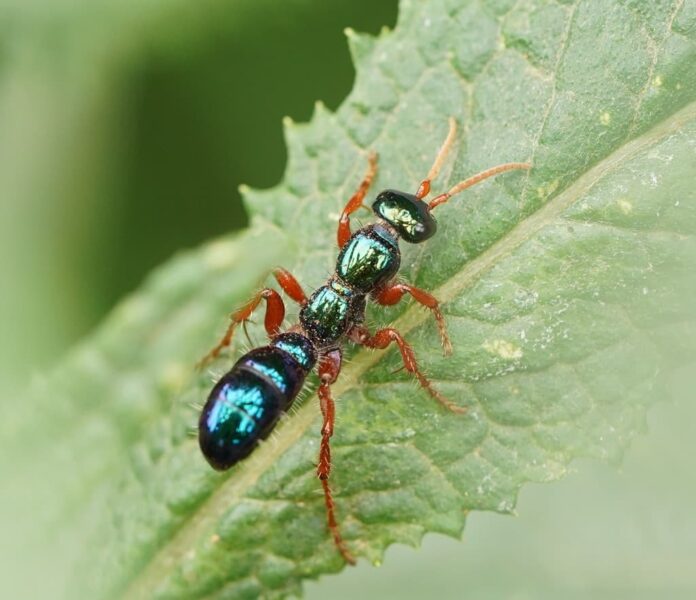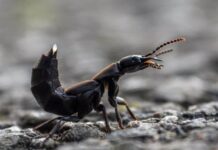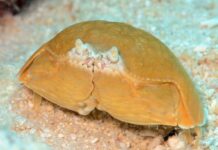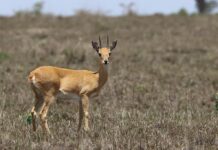Also goes by the name blue ant, the bluebottle ant is a wingless wasp. That’s right, a bluebottle ant is not an ant, it is actually a species of flower wasp. However, there are many unique traits about this insect that you might find interesting to know about. Among the so many parasitic wasp species, this one is ferociously pretty. Let’s find out more about this confusing insect, shall we?
1Appearance
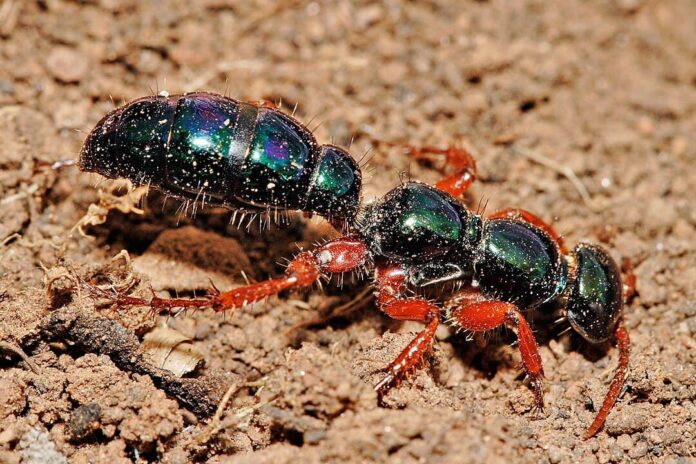
One of the most interesting things about blue ants is that males and females are completely different from each other. A female bluebottle ant has a beautiful metallic blue-green body and bright red legs, and she looks like a large shiny ant. She is also bigger, reaching a length of around 2.5 centimeters, and she is wingless. The male; however, is black with white markings, and he is only around 1.5 centimeters long, and he has wings. While not having wings, females are gifted with a stinger that they use to attack prey and lay eggs. So when disturbed, a female bluebottle ant is capable of stinging you; more than once. Actually, these are normal features for flower wasp species out there.
2Behavior
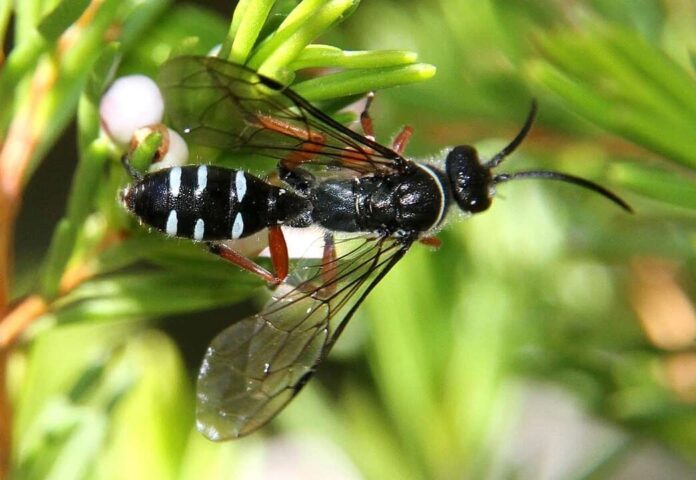
Bluebottle ants are ground-nesting insects, and they are fast-moving. When detecting danger, they will burrow under leaves to avoid predators. They are solitary unless they have to mate, and mating occurs on the wing, with the male carrying the female. Despite the reputation of most wasps out there, this one is not aggressive, unless provoked. However, the aggression lies within the mothers as the females hunt crickets for larval provisions. They exclusively go for mole crickets, and they paralyze their victims by injecting the venom into them. While injecting the venom, the wasp also lays her eggs upon it. That way, her larva will have food the moment it hatches.
3Feeding & Habitats
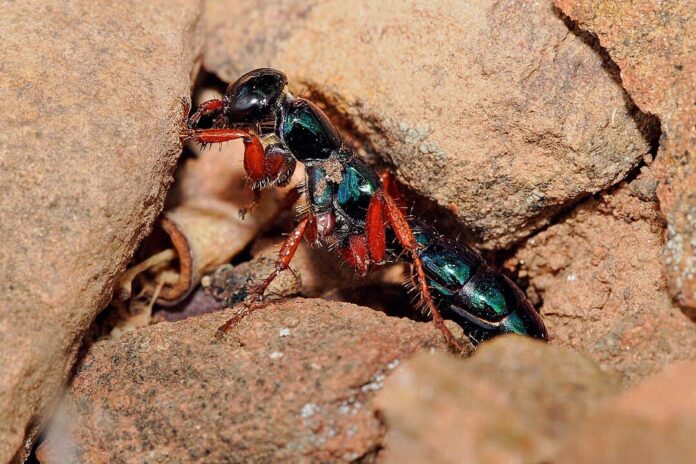
As mentioned above, bluebottle ant larvae feed on the paralyzed mole crickets that they hatch to. As for adults, they only feed on nectar, and this is why it is common to see them on flowers. In fact, these wasps are important pollinators for various native flowers in where they are from. If you wonder where freaky things come from, your first guess should be Australia, and you won’t be wrong. Blue ant is endemic to South and Southeast Australia, with a distribution across New South Wales, South Australia, Tasmania, and Victoria. They inhabit forests, urban areas, and woodlands where food is abundant. With a moderate habitat range, bluebottle ants are facing threats from climate change and habitat loss. The good thing is that their population is stable, and they are doing well at the moment.
Related Post: Bee Wolf Facts

